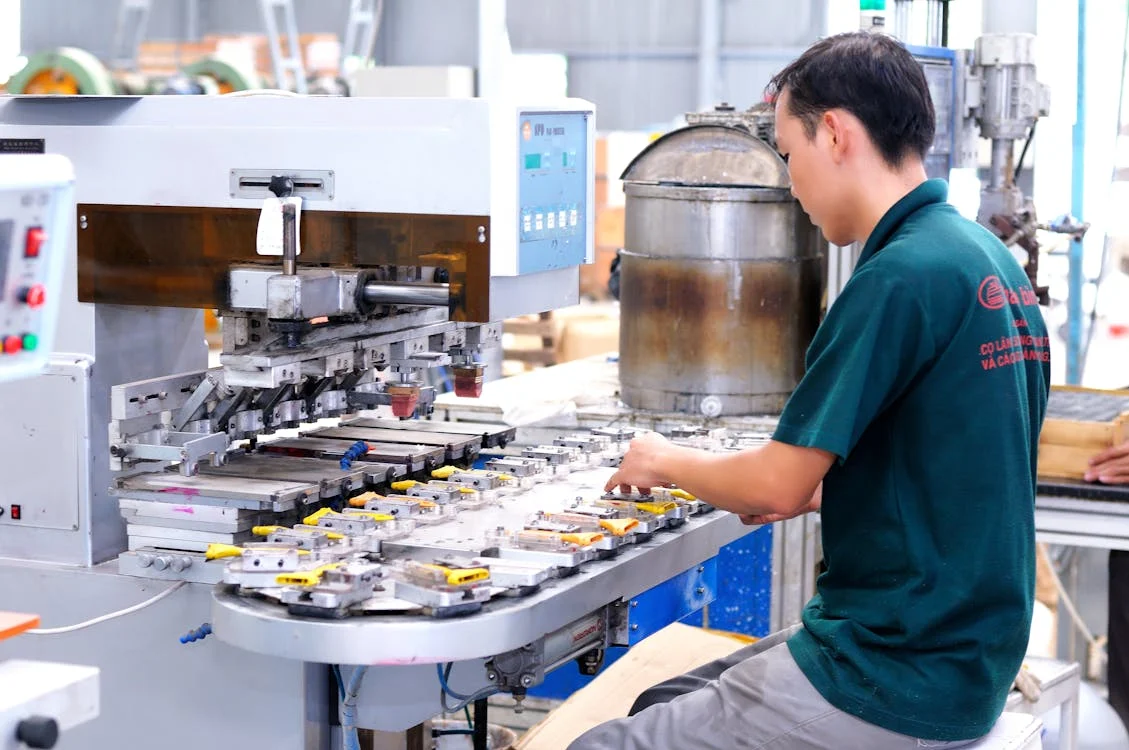Table of Contents
ToggleIn production, consistency is essential. However, ensuring consistent quality across big manufacturing runs can be difficult. Minor flaws, material discrepancies, or minor design changes can cause problems for both producers and customers. Teams may struggle to satisfy quality requirements if they do not have a clear reference for how the end product should appear and perform. These difficulties might cause delays, higher expenses, and customer unhappiness. To overcome this, companies need a reliable example that sets the standard for production, ensuring every product meets expectations.
What is a Golden Sample?
![]()
A product that exemplifies the highest quality is called a golden sample. It’s the perfect illustration of what a business wants its products to appear and behave like. Imagine you’re holding a new product in your hands. That product is flawless—every detail is just right. It has no mistakes, no defects, and everything is exactly where it should be. This perfect version is called the golden sample. It ticks off all the boxes on your product specifications.
Companies use golden samples as a reference point to guarantee good quality during product inspections. They compare all future products to this one to ensure consistency and quality. Think of it as a measuring stick for your desired quality standards. If the new product matches the golden sample, the product meets the company’s standards. It should also pass third-party quality inspections.
Golden samples are vital to many different industries, particularly those with mass-produced products. A golden sample helps ensure that every product created maintains the same level of product quality, whether it be toys, electronics, or clothing. You can think of it as your perfect sample.
To find a Chinese manufacturer to help with samples, read here.
Why Do You Need a Golden Sample?
You need a golden sample for several reasons. First, it establishes a standard for your production. Without it, there is no clear representation of how the end product should look like. This might result in mistakes or inconsistencies. With a golden sample, every employee, designer, and manufacturer understands exactly what to expect while doing product inspections.
Another reason is that it helps during inspections for quality issues. When a new batch of products is made, inspectors can compare them to the golden sample. If the new products don’t match, they can be rejected or sent back for improvements. This way, only high-quality products reach the customers.
Golden samples play an important part in customer satisfaction. If a business produces inconsistent items, consumers may be disappointed or frustrated. A golden sample assures that all products given to customers satisfy high standards, preserving the company’s reputation.
To put it briefly, a golden sample is essential to quality assurance. It guarantees that companies produce trustworthy goods that customers can rely on and that the production process functions efficiently.
What is a Limit Sample?

A limit sample differs somewhat from a golden sample. A golden sample shows the ideal product, whereas a limit sample demonstrates the least acceptable product. It is the product that has minor flaws but is still suitable for sale. The finished product may have a slight blemish, color variation, or misalignment, but it still passes final inspection and quality tests.
Limit samples help manufacturers understand what level of defects are allowed in the production line. It sets the boundary between what’s acceptable and what’s not. If a product is worse than the limit sample, it needs to be fixed or discarded. If it’s equal to or better than the limit sample, it can be sold.
Limit samples are especially useful when small defects are hard to avoid. Instead of rejecting every product with a minor flaw, companies can use a limit sample to decide what’s okay to ship.
When to Use a Limit Sample?
Limit samples are used during the inspection process. When inspectors check new products, they use the limit sample to compare. If the final sample looks similar to the limit, the inspector knows it’s still acceptable, even if it’s not perfect.
Limit samples are particularly useful in companies that often experience small faults throughout the manufacturing process. For example, small scratches or flaws are typical in electronics manufacturing. In these cases, using a limit sample helps avoid wasting perfectly usable products. Companies can save time and resources by accepting products that meet the limit sample criteria.
Limit samples are not, however, used for every product. For high-end or luxury products, even the tiniest flaw might not be tolerated. In these instances, the golden sample is more essential, and limit samples may not be used at all.
What is the Purpose of a Limit Sample?

The purpose of a limit sample is to save time and resources from mass production to the quality approval process post-production. Instead of rejecting every product with a small defect, companies can use a limit sample as part of their quality control measures to decide what’s still good enough to sell. This helps avoid wasting products that are almost perfect but not quite. Setting a limit sample is ciritical before mass production begins.
Limiting samples also helps to maintain consistency and efficiently manage product quality. If everyone understands what the limit sample looks like, there will be no confusion about which products are acceptable and which are not. It guarantees that all inspectors and employees, even a third-party inspection company, are on the same page when determining quality standards. It also ensures that the supplier produces items that meet their inspection checklist, including future mass-produced items.
Customers expect high-quality items, yet slight defects may be acceptable, especially if the product is affordable. Using a limit sample, companies may create products that meet these requirements without overdelivering or overpaying on perfection.
What is the Difference Between Golden Sample and Limit Sample?

The primary distinction between a golden and a limit sample is quality. A golden sample indicates the greatest possible version of a product. It sets the benchmark for how the product should appear and perform. It’s a perfectly made product, with no defects.
A limit sample, on the other hand, shows the lowest acceptable quality. It has minor defects but is still good enough to sell. It sets the line for what’s acceptable in terms of flaws.
Another difference is how they are used. A golden sample is used to set the standard for all products. Every product should match the desired standards as closely as possible. It’s a tool for quality control and consistency.
A limit sample is used to figure out items that can still be sold despite imperfections. It assists producers in determining when a fault is too severe and when it is acceptable to release the product.
In short, a golden sample is about perfection, while a limit sample is about what’s acceptable.
Summary on Golden Sample and Limit Sample
Both golden and limit samples are essential for quality control in manufacturing. A golden sample represents the ideal product, whereas a limit sample shows what is still acceptable despite minor flaws. It’s important to determine them first before you conduct product inspections.
Together, they enable businesses to produce dependable, high-quality products that meet client expectations and quality requirements. Manufacturers can use these tools to assure consistency, manage resources smartly, and maintain high standards without wasting valuable products. They can also help manage product quality effectively.
To find reliable China manufacturers for your products, click here.






